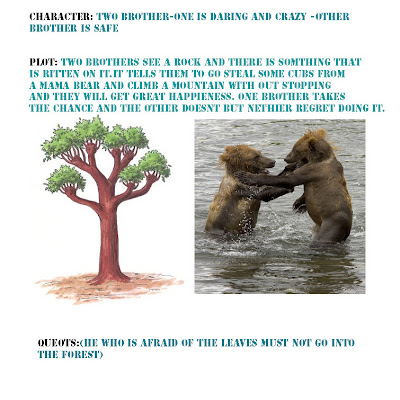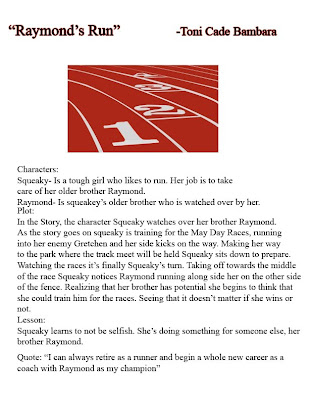Monday, June 28, 2010
michaelm.....
Tuesday, June 1, 2010
Wednesday, May 26, 2010
tyler cortland
phylom Chordata people, rat, birds, shark, lion
class mamalia people, whale, elaphant, dolphins
order primata people, monkey, lemurs
family hominidae monkey, people
genus homo monkey, people
species homo sapiens monkey. People
luke
2.phylum chordates frogs snake monkeys
3.class mammal bird whales tiger
4.order primate monkey gorlia ape
5.family mankind people
6.genus homo
7.species sapiens
brittany science
Phylum:Chordate ex. owl
Class:mammal ex. tiger
Order:primate ex. monkey
Family:mankind ex. people
genus:homo
Species:homo sapiens
Wednesday, May 19, 2010
michaelm. persuasive reading and writing
How to read persuasive writing
Persuasive writing is another word for convince but used in a more grown up way that is more used in schools taught in English along with all the other words such as thesis, and good information. Think of persuasive writing as an opinion or trying to convince using lots of arguments with positive and negative effects.
How to write persuasive writing
Writing persuasive writing just using your ideas but like I said before using lots of arguments, good details, and the positive and negative effects about the topic your talking or writing about. Here are some examples on some topics using persuasive writing...
Should junk food be aloud in schools?
Positive:
1.) Kid’s that don’t have a lunch or snack to eat but have money to buy something.
Negative:
1.) Its bad for the student’s health and can harm the internal origins
Like the positive and negative effects that are used in these sentences are much like the details and examples that are used in a persuasive letter from your own point of view.
Positive:
Negative:
Reasons:
Tuesday, May 18, 2010
Wednesday, May 5, 2010
julian sience word
What angle must you have to make your ping pong ball or golf ball go at least 3 yards on a ping pong catapult?
What angle must you have to make your ping pong ball or golf ball at least 3 yards on a ping pong catapult? First you must know the definition of drag. The definition of drag is resistance to air. (Drag 1). With drag and the golf ball, you have to know do the dimples affect it the answer is yes the air current is affected around it.
 (This picture shows the air currents around the balls.)
(This picture shows the air currents around the balls.)
Even with dimples affecting the air bubble around the ball weight is also an issue because the wind might move it even if its light. And the thing that shows that put a piece of paper on the table on a windy day it moves and after that put a rock on the same table on the same day does it move no. so weight will effect this experiment.
You must also know about air resistance the difference of air resistance is that air resistance is falling object drag is the resistance of air not air resistance. The definition of air resistance is the action of friction that slows something moving through the air.(air resistance 1). The definition of drag and air resistance are similar but they are different too.
dimples
The dimples on a golf ball
Art Mr.R Science
Procedure: 1.Research
2. Materials necessary
3. Hypothesis
4. Experiment
5. Notes/data/statistics - Of experiment
6. Proof of experiment
7. Presentation/ Poster
Materials:
1.Water
2.Chromatic Tuner
3. glass coke bottles
4.Ruler
5.Food coloring..maybe..
Type of graph:
Table
Picture of multimedia:
Pictures of experiment and how it happened
Subject of background research: Sound,tones
Purpose: How to or how a water xylophone works and the science behind it.
Enrique---mr rachlin science thing
Purpose: to show how vibration works and how music is made
Hypothesis: I think it will make a music
Subject of background research : What allows a water Xylophone to make Diff rent sounds
procedure: put the get the materials needed, water in the bottle, meagre the amount of water that is in the bottle so there isn't a huge amount difference.
materials: Water,glass bottles,drum sticks or a spoon ,chromatic tuner, food coloring optional,
type of graph: line graph
Picture:

obstacles to overcome: not brake the bottles
When you plan to do the experiment: as soon as possible
Rodrigo Mr.R Science

not finished
Purpose: I love swimming so i wanted to see what type of things can affect swimming.
Hypothesis: Is that probably most likely that it takes away more energy because the drag make you slow down so you try to put more energy.
subject of background research:
christian s. mr.r science
purpose: i want to know what will happen to planes under air resistance.
hypothesis: i believe the paper air plane not under air resistance will travel faster
subject of back round research: air pressure
procedure: first you turn on the fan to low breeze. next, you throw the the paper air planes at the same strength.after that you record the data and repeat the tests two more times and record the data.
materials:paper, pencils, fan, poster board, computer, books, magazines.
type of graph:line graph
obsticals: it may be different data
estimated time of finish: may 17
victria r science
Perpose: To know the spin of the motion of the pendulum
Hypothesis: get some numbers for how fast the spin is
Subject of background reasearch: What makes a curve ball curve
Procedure : going to use a baseball and wrap it around it and tie a string around the rubber band
Materials:
felipe science
Jacqueline's Mr.R Science


Brittany; Mr.R science

Obstacles: They need to grow; and cant get mixed up
When i plan to finish: when the flowers done growing or by the time i need to turn it in.
julian sience
Monday, April 26, 2010
Tuesday, March 9, 2010
Monday, March 8, 2010
Sunday, March 7, 2010
Thursday, March 4, 2010
Emily
By: Marion Dane Bauer
Heather: She’s a Girl Scout.
Risa: She’s rude and annoying to Heather.
Miss Benson: She’s nice and blind.
Plot:
Conflict: Heather doesn’t know how to talk to Miss Benson.
Complicating events: Risa showed up and sort of took over.
Climax: Risa and Heather confront each other about the book.
Resolution: When Risa and Heather decide to read together.
Lesson learned: First impressions aren’t always reliable.
“You’ll be helping her, and she’ll be helping you. Kind of a good deed both ways.”
Emily
By: Joan Aiken
Sandy: She was nice and happy.
Lob: He was a nice and loving dog.
Plot
Conflict: Sandy liked someone else’s dog that lived across England.
Complicating events: Lob came across England to be with Sandy.
Climax: Lob came across England again.
Resolution: Lob’s owner let Sandy’s family have Lob.
Lesson Learned: Sometimes you don’t pick the animal, the animal picks you.
“Some people pick their dogs, and some dogs choose their people.”
Tuesday, March 2, 2010
Emily
By: Ray Bradbury
Margot: The only kid in the class to remember the sun.
The other kids: Don’t remember the sun.
Plot
Conflict: The kids think Margot is crazy when she talks about the sun.
Complicating event: The kids lock Margot in a closet.
Climax: One of the kids remembers Margot is in the closet.
Resolution: They let Margot out.
Lesson Learned: Don’t take jealousy to a big level.
"Margot! She's still in the closet where we locked her."












































